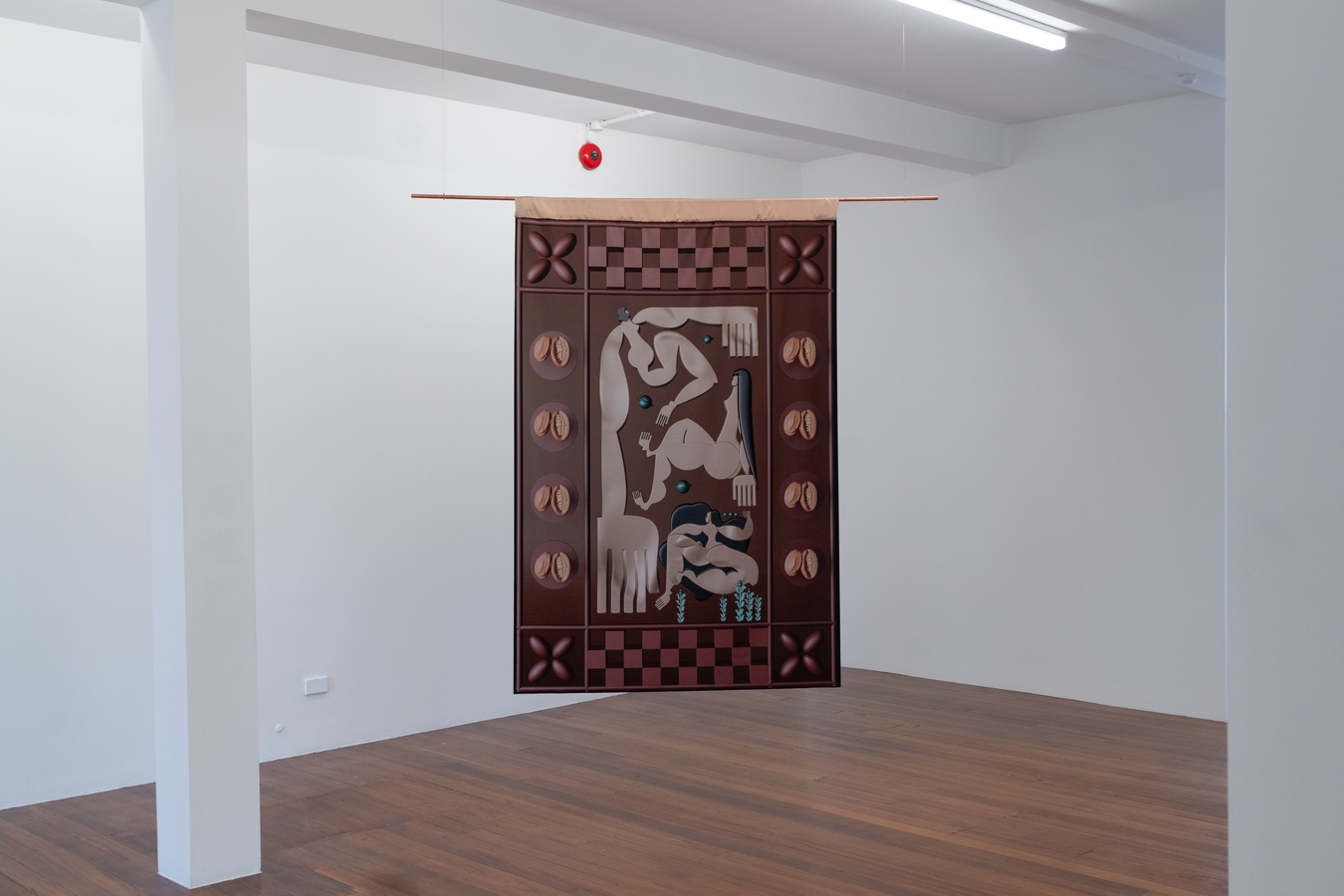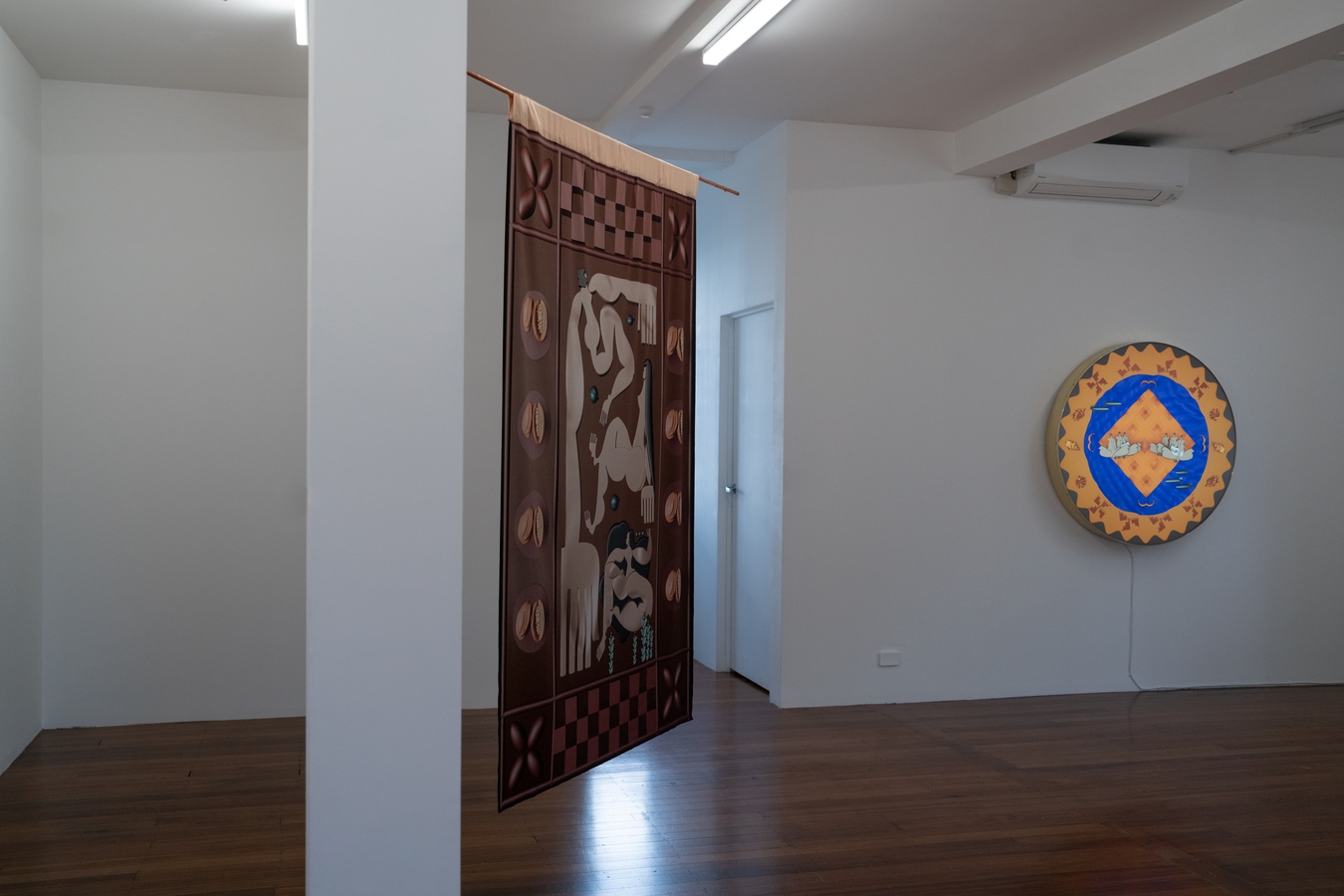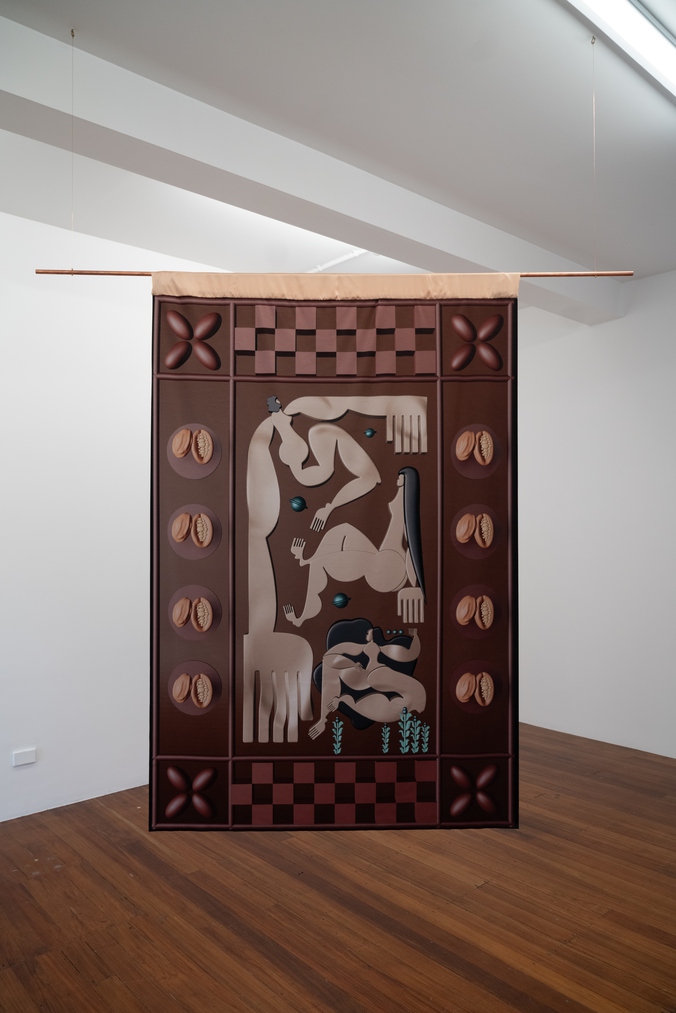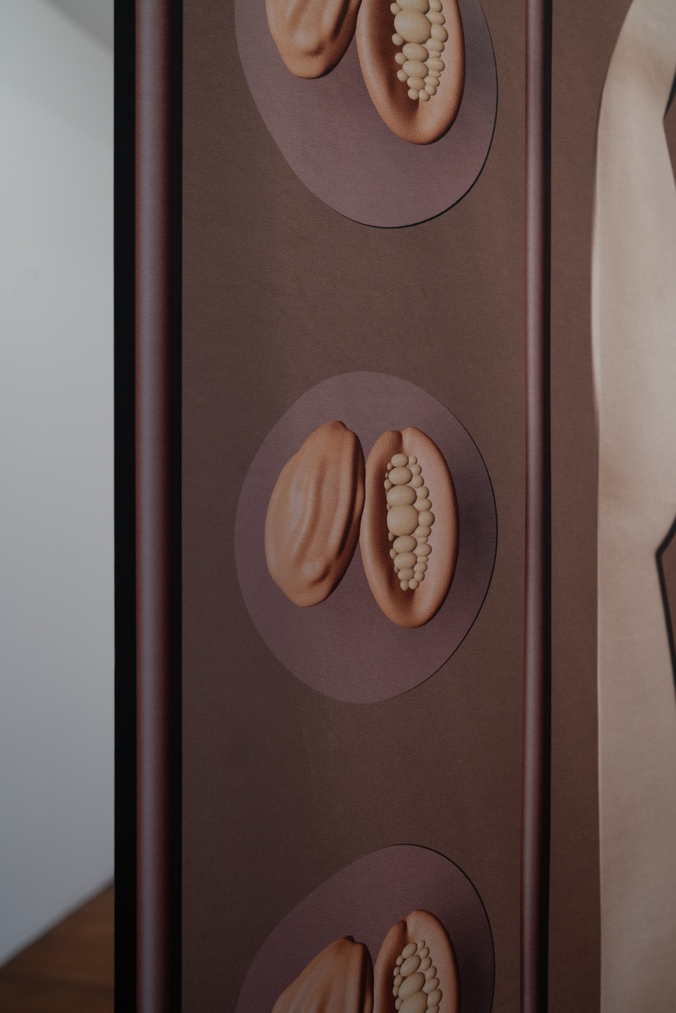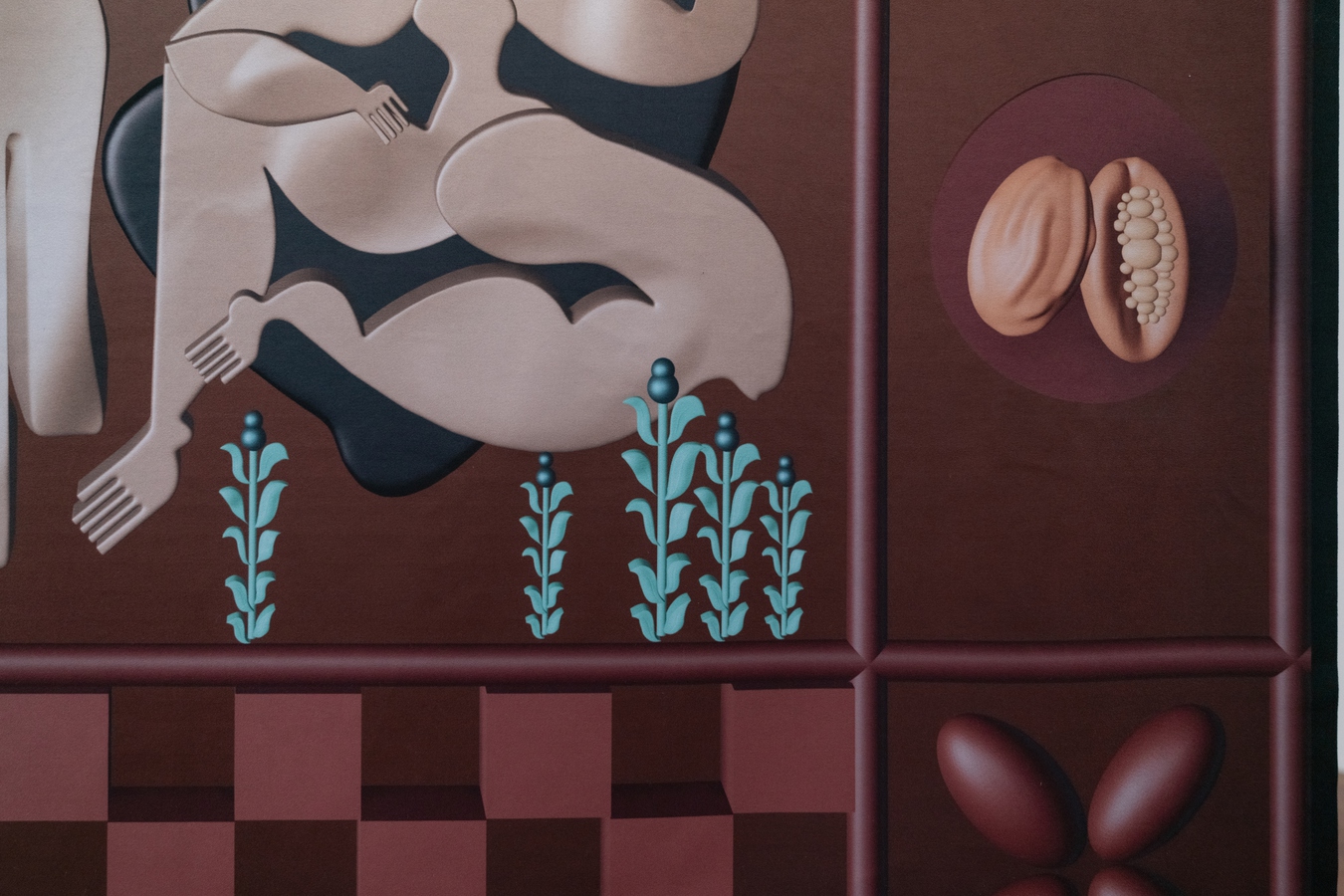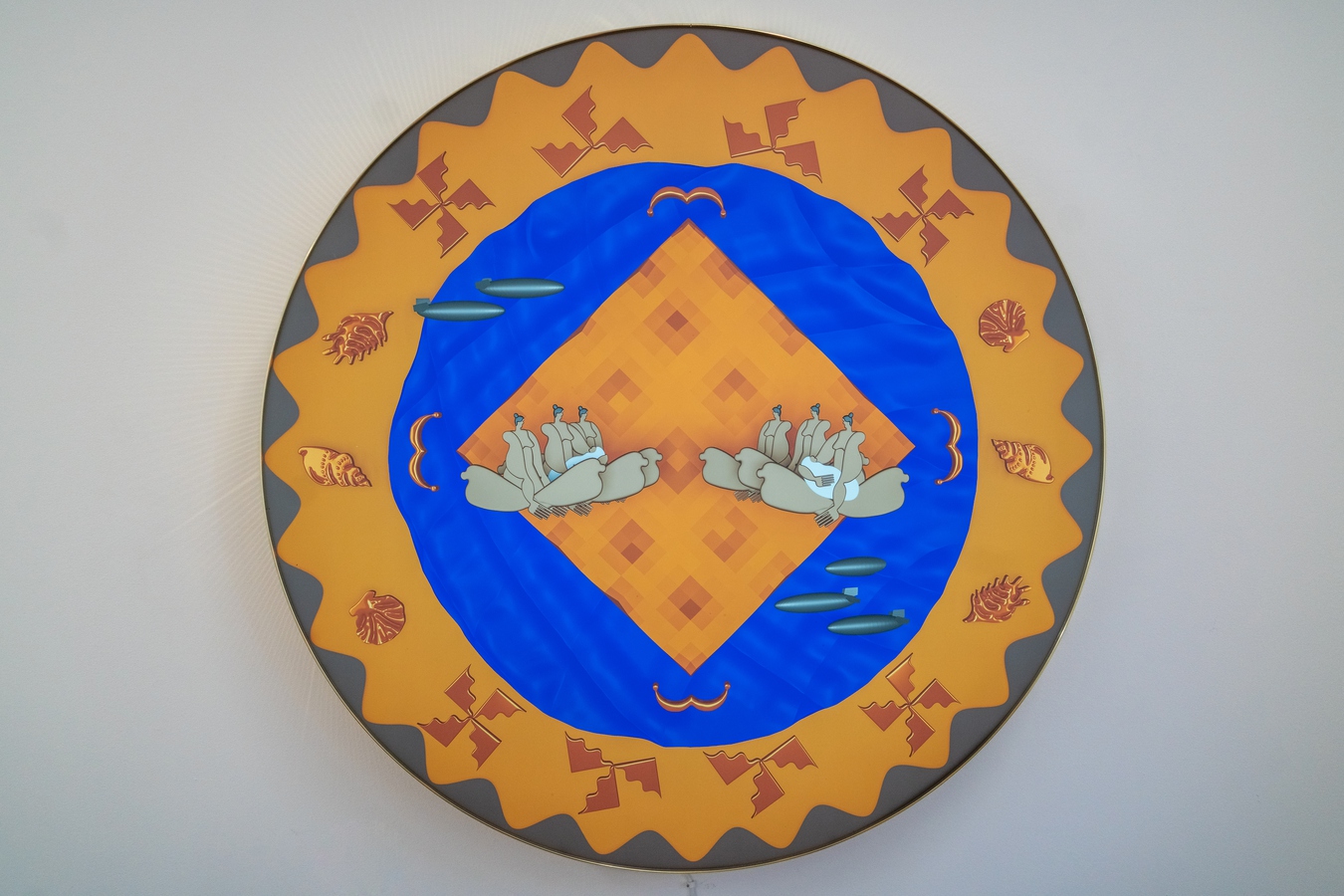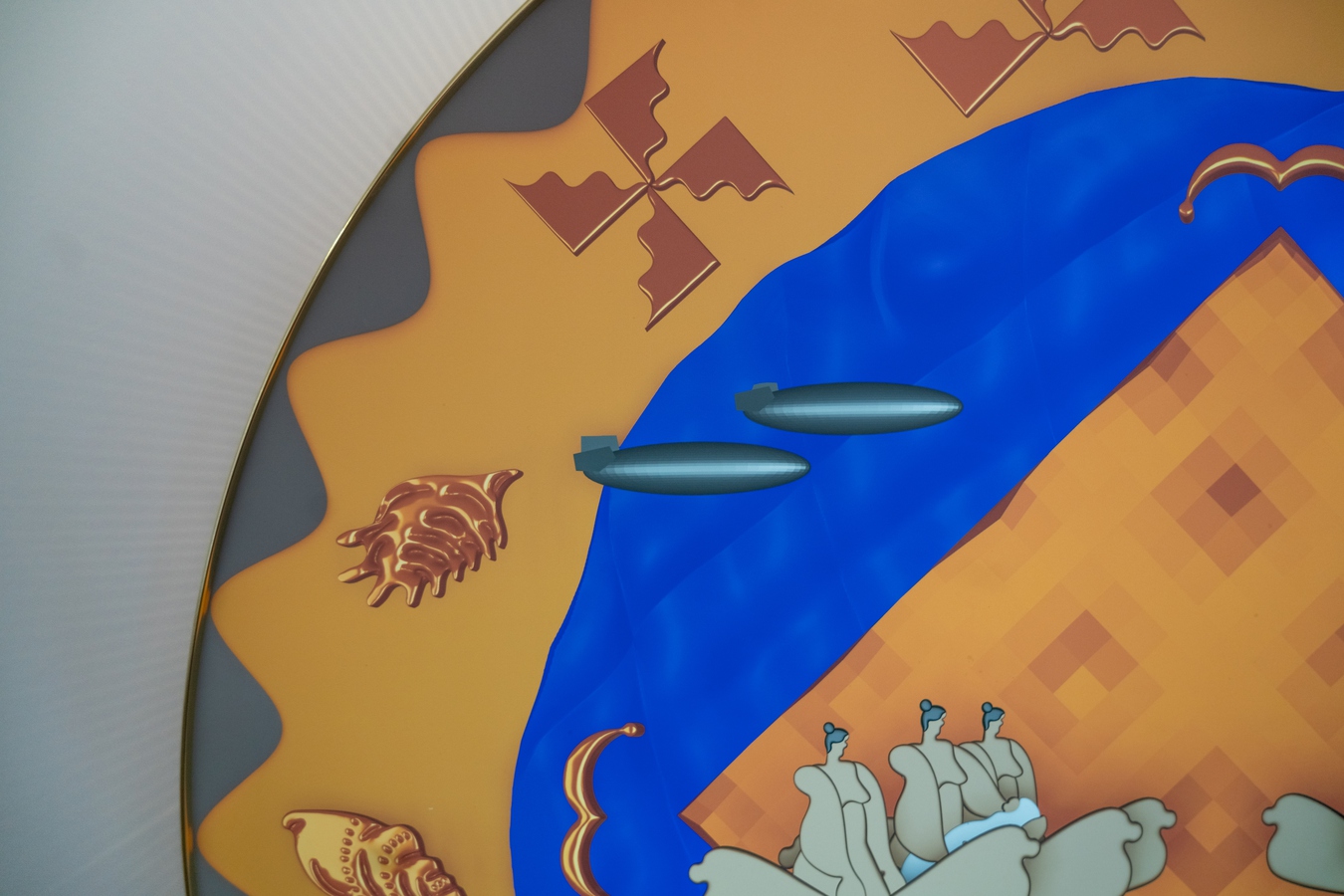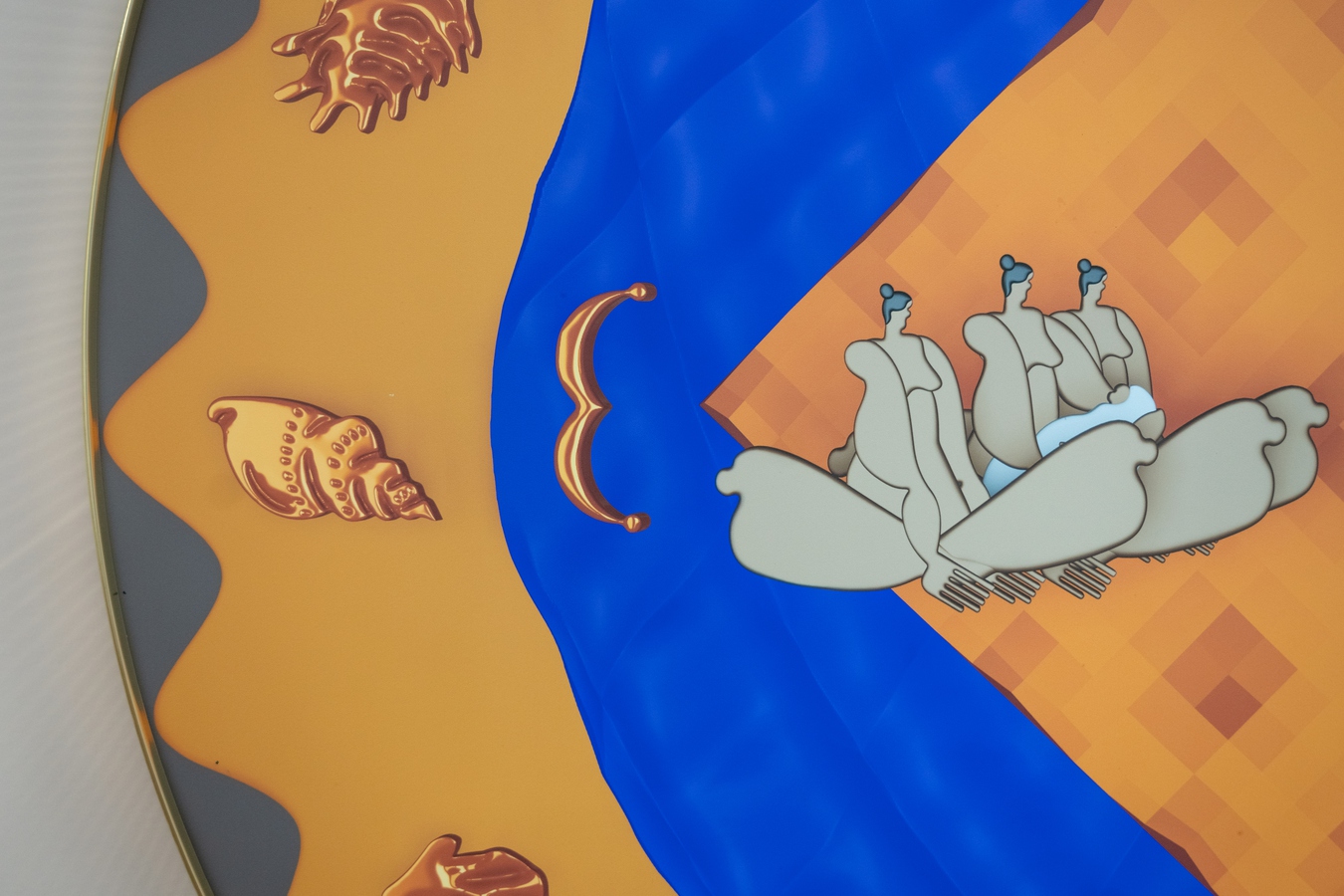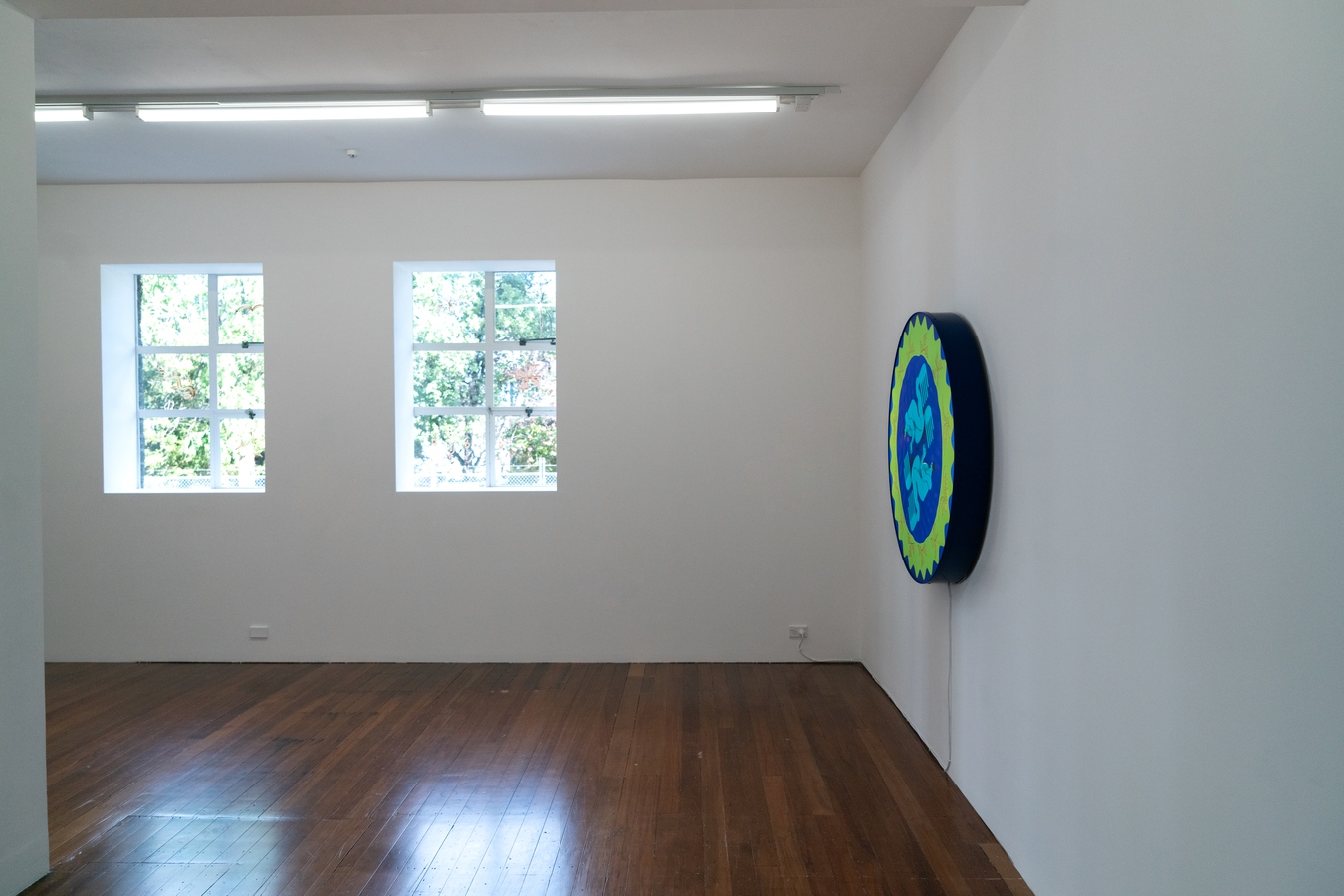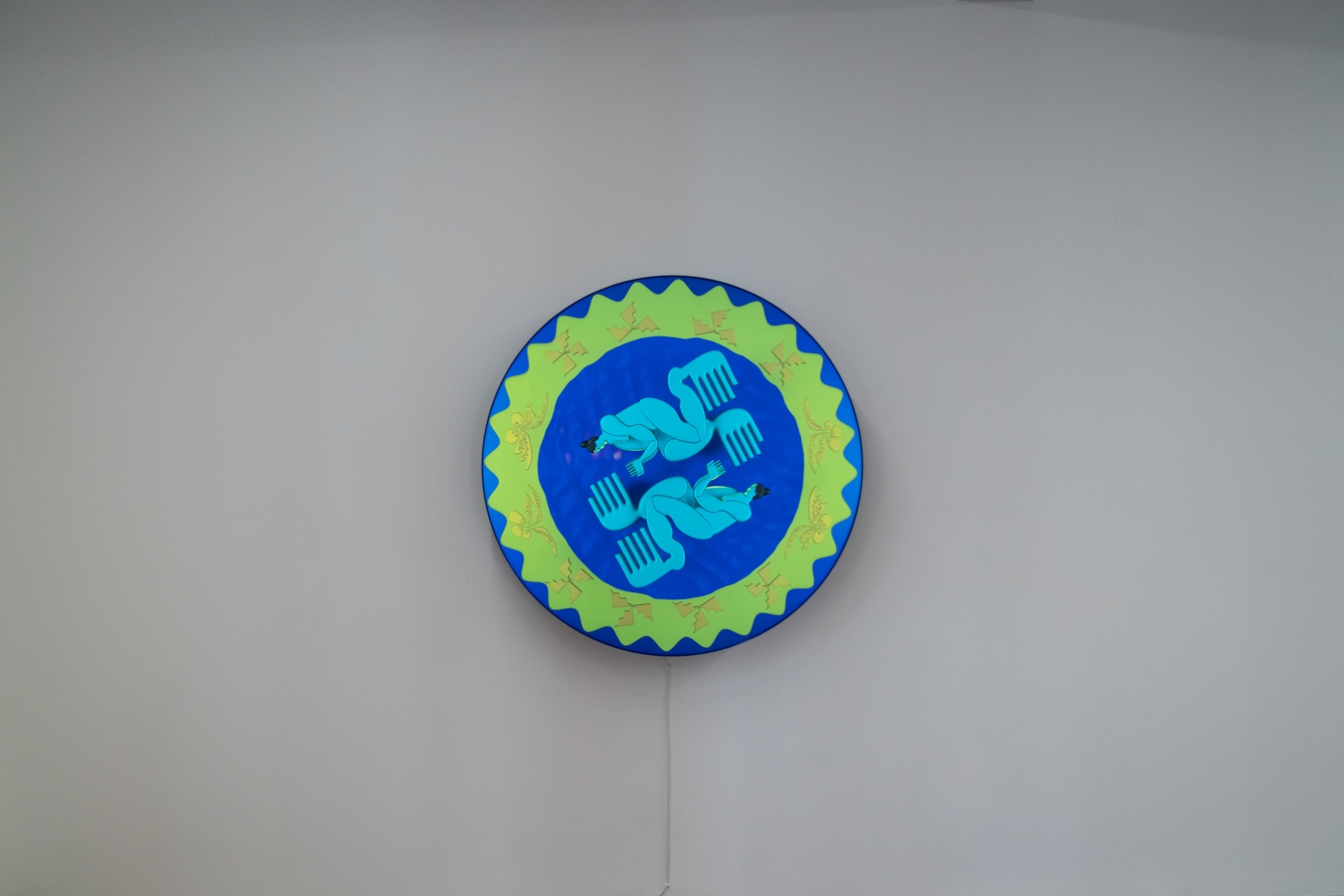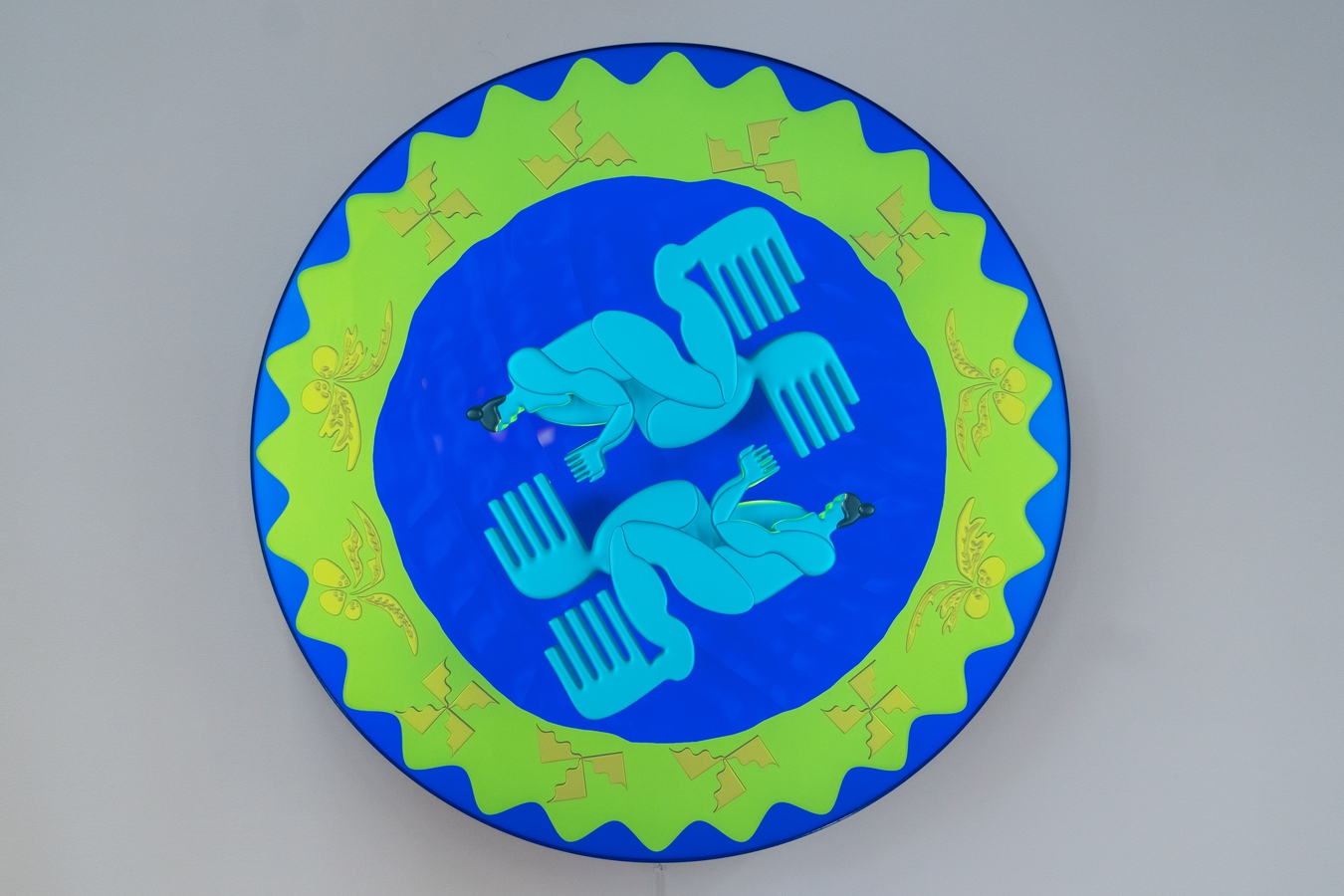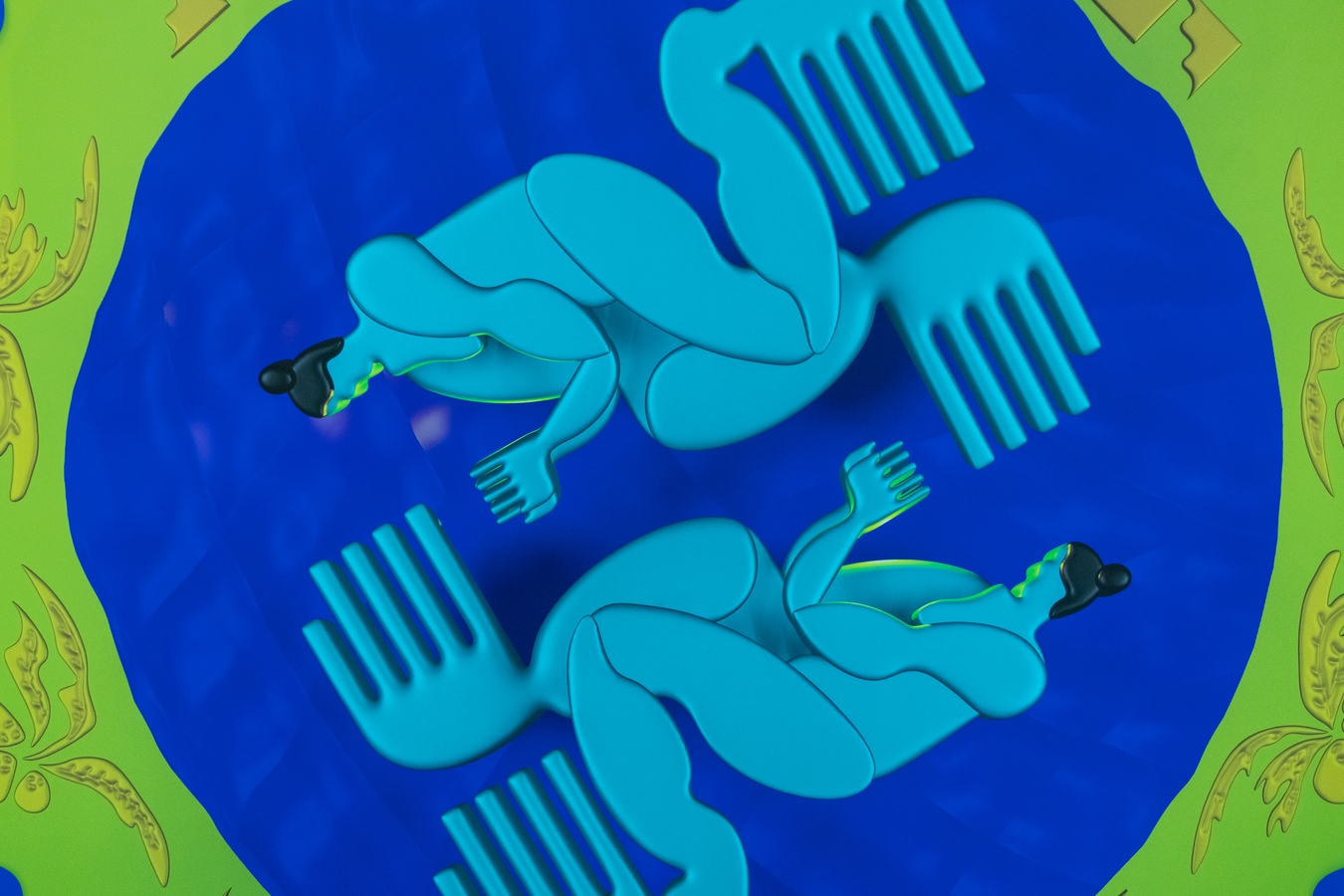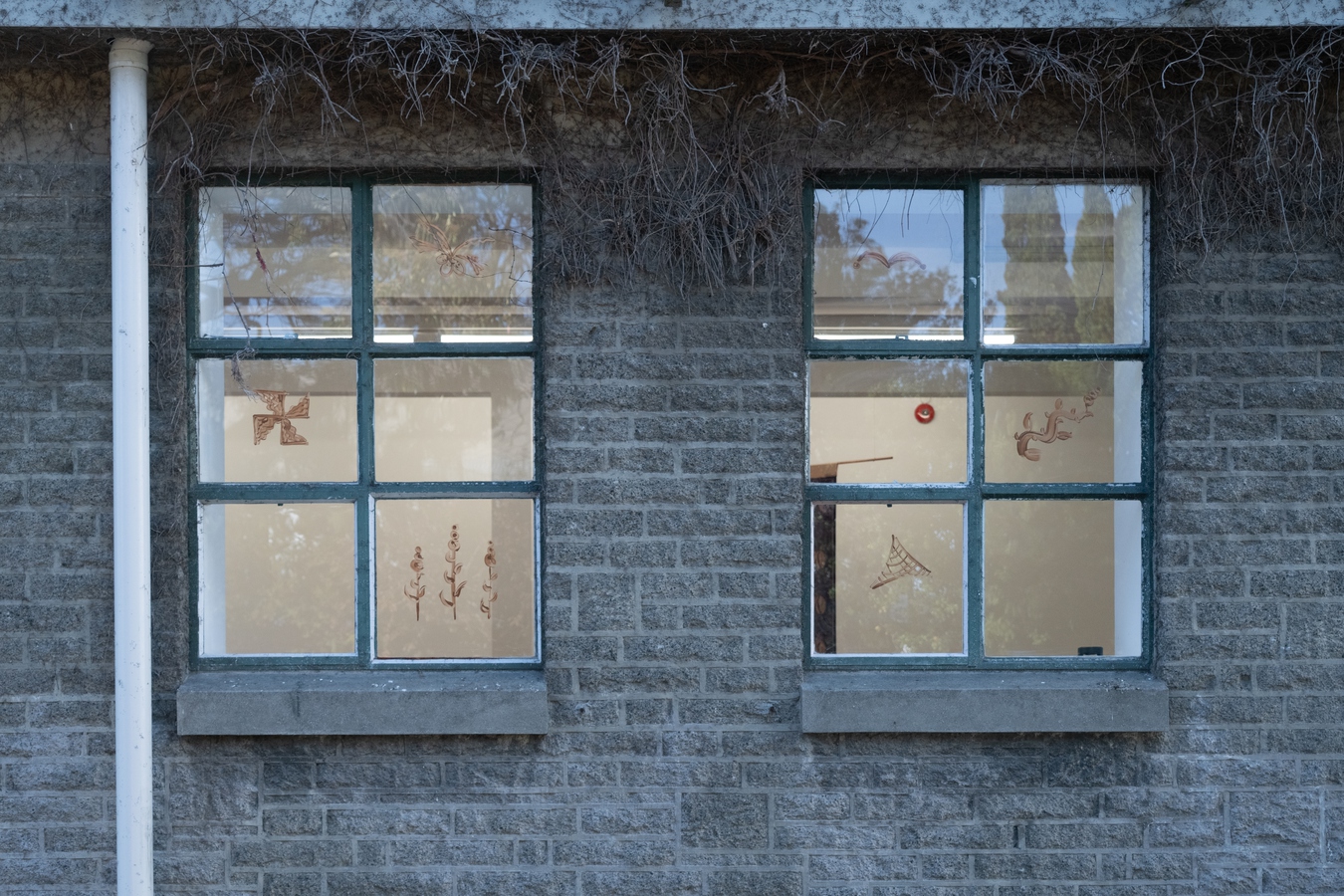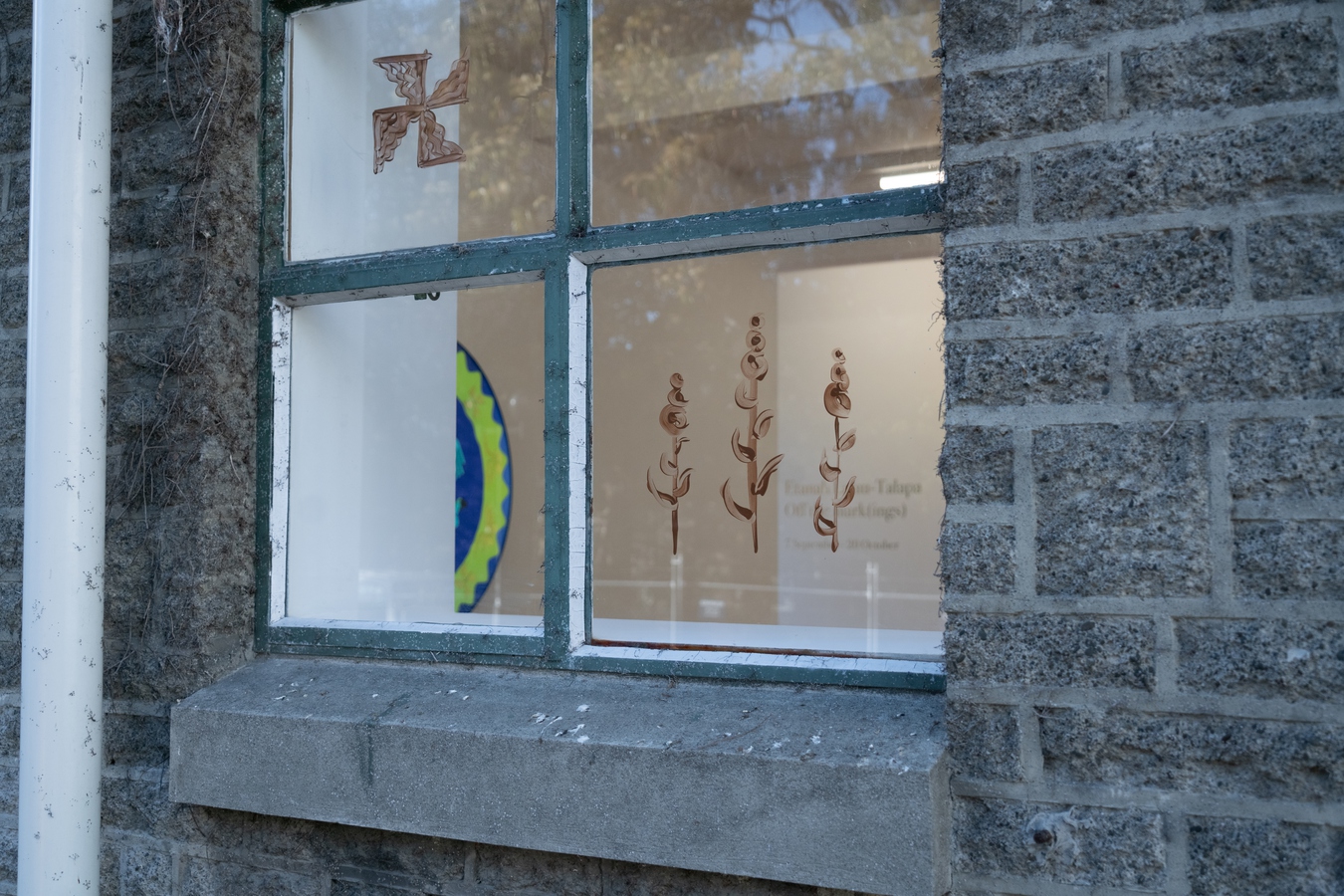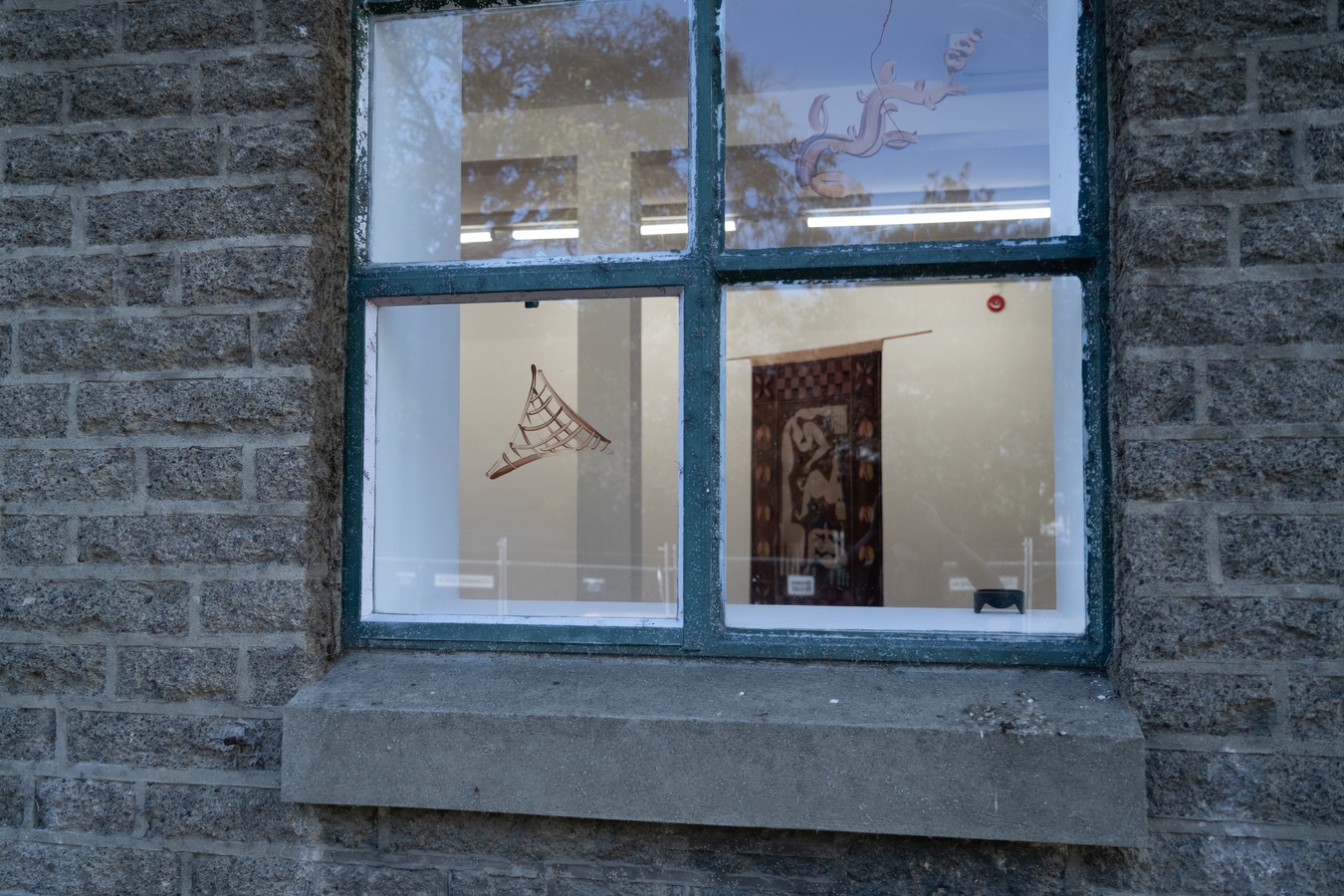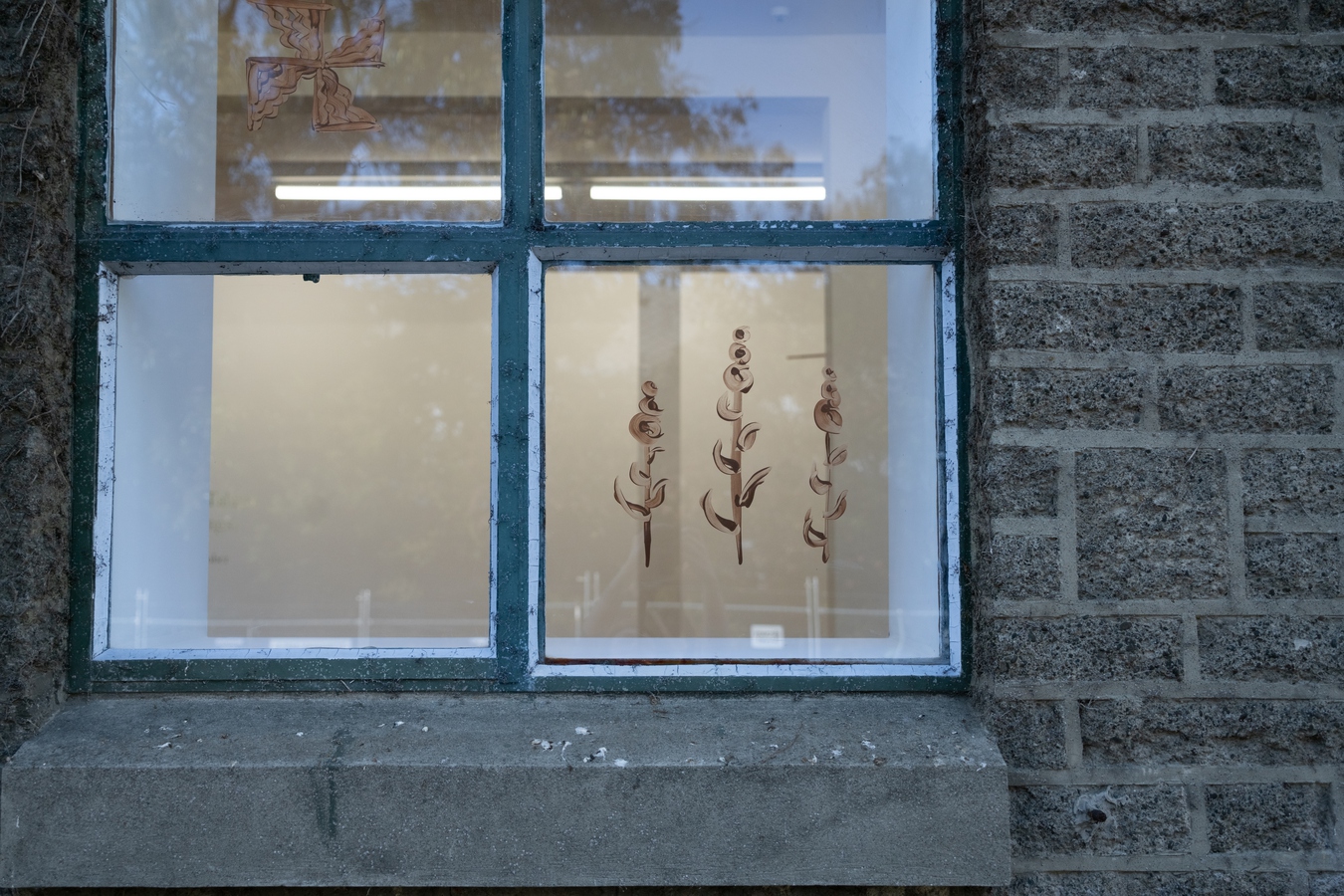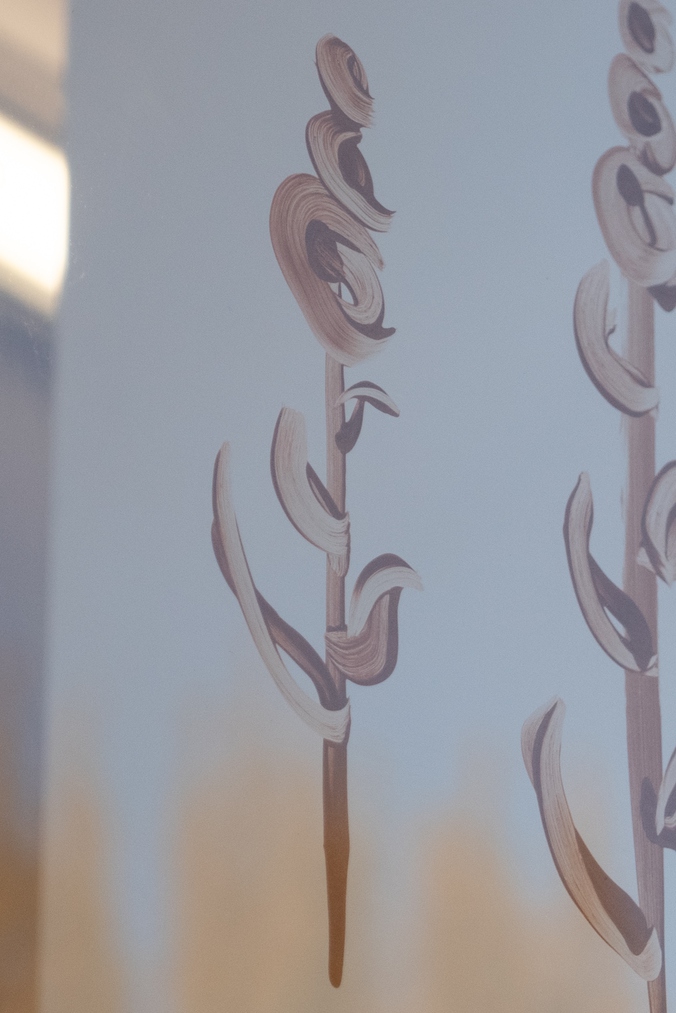Etanah Lalau-Talapa
Off the mark(ings)
07 Sep — 20 Oct 2024
Off the mark(ings)
Etanah Lalau-Talapa
Off the mark(ings) is a resistance against the enduring effects of colonisation and militarisation on the environment and Pacific arts. In this solo exhibition, Etanah Lalau-Talapa builds an expanded worldview from shells, birds, and deep textile histories. The title of the exhibition foregrounds the importance of drawing in Lalau-Talapa’s practice. From here, new motifs spring, bringing the tint of a 90s childhood into contact with research in online museum archives of 19th and 20th century Samoan tapa. Referencing siapo mamanu (free-hand drawing), personal and ancestral experiences, and knowledge shared across Te Moana-nui-a-Kiwa, Off the mark(ings) considers how these circulate through digital and physical realms, and the importance of digital self-determination for Pacific cultures.
Three women hold the central space in the textile work Uso (2023). They represent three grandmothers who had a formative presence for Lalau-Talapa, figures of matrilineal knowledge passed down through conversation and lives spent together. As in traditional forms of siapo, Uso’s story unfolds in motifs about the Samoan environment and resources. Koko pods border the work, their seeds intricately rendered. Lalau-Talapa recalls summer holidays helping to prepare the koko for her grandmother to take to the market to sell.
There is also a realisation for Lalau-Talapa, in the making of Uso, of what has slipped through the gaps of time and memory. A cluster of unknown plants grow in the corner. They draw on a typical siapo motif, but the source for that motif is now elusive. As most siapo patterning looks to plants and other things abundant across Te Moana-nui-a-kiwa, the plant is likely to be growing all around in Samoan soil, but its likeness is hidden in plain sight in historic and modern tapa. Negotiating these shifts in what is common and shared knowledge is at the core of Lalau-Talapa’s practice: how can Pacific art embrace the possibilities of the contemporary while holding onto the extensive and specific textile histories that came before?
The persistent challenge of continuing Samoan cultural practices and adapting to new technologies is present in Lalau-Talapa’s two lightbox works, Lurkin’ through my aiga rim (2024) and Carry the popo, and carry the smartphone (2024). Glowing like portals, or a laptop screen even, their shape is taken from circular siapo, which are rarely seen in Samoa now. Lalau-Talapa accessed images of these through museum collection databases, so the surface of the digital is tangled in her contact with such examples. On a screen, the texture of the tapa and the marks made by hand are flattened, smoothed out into an array of pixels.
Lurkin’ through my aiga rim (2024) responds to Lalau-Talapa’s first time at FESTPAC, this year held in Hawai’i. A quadriennal festival started in the 1970s, it is a cultural exchange between 28 participating South Pacific nations. Attending with her family, she perceived the beauty of Hawai’i’s natural environment and the masterful use of shells on every hale present at the festival. These shells appear in Lurkin’ through my aiga rim amongst tusili’i, one of the oldest siapo marks, and manu, flying over the moana in the chrome lustre of 90s bling.
As in Uso, the importance of women as leaders, mothers, artists, activists and myriad other roles is foregrounded here too. The malu that appears where the pixelated diamond moana aligns with the manu symbolises protection and the important role of women in Samoan families. This shape, traditionally tattooed on the back of the knee, signifies female strength and the transmission of ancestral knowledge. For Lalau-Talapa, the joy felt in being able to see so many examples of sophisticated textile traditions at FESTPAC was tempered by grief and rage towards the difficulty sustaining these practices against the ongoing effects of colonisation and militarisation in the South Pacific. Grey missiles plummet across the work as a reminder of this loss and an ache to hold this pain in tandem with the celebration of vibrant Pacific culture at the festival.
Lalau-Talapa asks: are we truly engaged with one another? What are we allowing to influence our values and interactions? Island nations like Samoa are not considered when powerful foreign corporations develop social media, yet in a very short time they have started to surpass modes of relating that have evolved over centuries. When details and photographs of people, places and culture are uploaded, the ownership of that data is transferred to these companies. At the 2024 Aotearoa Digital Arts symposium, the issue of social media and data sovereignty was addressed in two of the keynote lectures. Critical engineer Julian Oliver noted that the exploitation of data is the final act of colonisation. Expanding on this thought, Tokelauan Fijian writer Emele Ugavule observed that while there is a lot of noise on and about social media, its impact on oneself and community is only as much as you let in. The commotion will find its own end; this can be the age of listening, and this position, of an open ear, is where Lalau-Talapa approaches from.
In Carry the popo, and carry the smartphone (2024), the glow emanating from the hands of the central figures could be the familiar illumination of a device, or something more spiritual. The rapid adoption of social media as a platform for communicating and connecting in Samoa has made questions of digital self-determination urgent. The mechanisms of social media platforms have not been designed for specific cultural politics, nuanced community structures, or the importance of face to face communication. The use of this technology in recent election campaigns in Samoa belied how liking, sharing and commenting could not support the complexity of family values, the sacredness of ‘aiga, chiefdoms and kinship, resulting in a discordant ripple through the political landscape. The moana is blue but so is Facebook.
The gallery windows have been treated as lightboxes as well. Their frames act as the grid structure that guides the patterning on tapa. ‘Ele’ele (2024) brings the motifs back into the real and grounds how essential drawing has been for Lalau-Talapa to process her experiences, as a way to connect with tapa, and as a precursor to creating their digital versions. Repeating a pattern over and over again allows the formation of a personal relationship to them, connecting back to ancestors that also made these marks and recognising the precision and skill needed to make siapo mamanu. Backlit by sunlight, the natural world filters in through Lalau-Talapa’s painting. These manu, net, popo and other things that grow in Samoa that recur between the works in Off the mark(ings) swing between digital and physical worlds as oscillating meditations on culture, motherhood and art-making in the contemporary.
______________
Etanah Lalau-Talapa
Etanah Lalau-Talapa is a multi-disciplinary artist and curator of Afega and Sa'anapu heritage from Samoa. With a Bachelor of Design in Spatial Design from College of Creative Arts at Massey University, her work spans across public installations, digital art, mixed media and photography. Her works often explore motherhood, family lineage and lived experiences of the Pacific diaspora in Aotearoa. Her interest lies at the intersection of discovering new visual languages that bridges traditional and contemporary creative forms, while reflecting on her Samoan cultural heritage. Etanah is currently working as Hutt City Council's Community Arts Facilitator.

